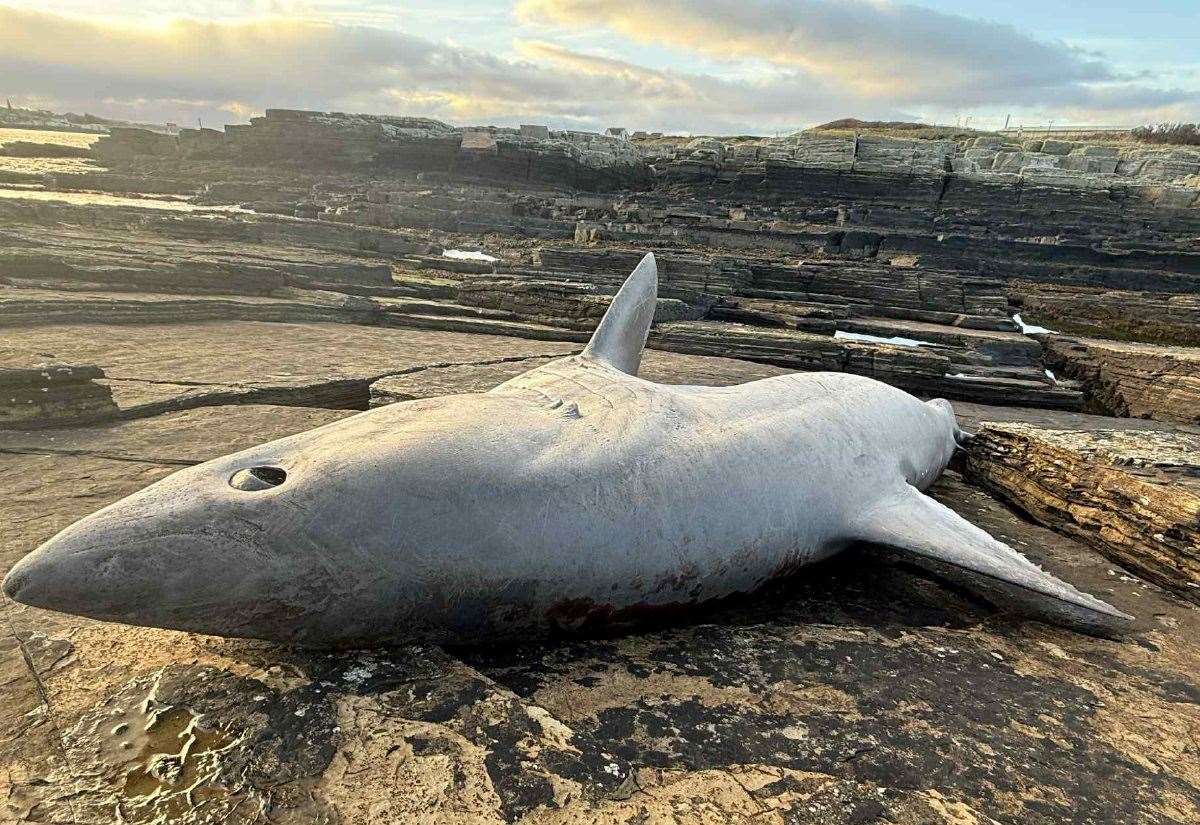The porbeagle shark was measured at five feet 10 inches. Picture: Annemarie Simpson
A shark measuring almost six feet in length has been discovered washed up on the rocks at Wick North Head.
The deceased marine animal, confirmed to be a porbeagle shark, was found at around 4.30pm today near Wick wastewater treatment plant.
Papigoe native Annemarie Simpson, who was first to find the shark, said it was “quite a sight”.
Annemarie, who was enjoying a walk with partner Kev Stewart, says she measured the shark at five feet 10 inches, before reporting the find to marine authorities.
“I often look at the shore to see what’s been washed in,” she said. “Usually it’s just rope wood and creels, but today I spotted a fin on the rocks.
“Its tail was vertical indicating a shark rather than the more commonly found porpoise or risso dolphin, so excitedly I called my partner Kev and we went to explore a bit closer.
“Sadly, the shark had died, but I’m not sure how as there’s no obvious wounds. I suspect the blood is from being thrown on the rocks and being at an early stage of decomposition.
“It was an exciting find and interesting to see in the flesh, although I much prefer seeing them alive and in the water where they belong.”
The finding has been reported to the Scottish Marine Animal Stranding Scheme.
Picture: Annemarie Simpson
Picture: Annemarie Simpson
Picture: Annemarie Simpson
Porbeagle sharks are among the most powerful marine predators found in northern Scottish waters – and they’re no strangers to the Caithness coast.
Native to the North Atlantic, the porbeagle is a close relative of the great white, thriving in the cool, temperate seas around the British Isles.
Known for their torpedo-shaped bodies and muscular build, these sharks are built for speed, capable of sudden bursts to chase down prey such as mackerel, herring and squid.
Porbeagles are regularly recorded off the north and west coasts of Scotland, including the Pentland Firth and waters around Caithness, Orkney and Shetland.
The injured porbeagle shark was discovered on the rocks at Wick North Head. Picture: Annemarie Simpson
Sightings tend to peak in summer when the sharks follow shoals of fish closer to shore. Despite their formidable appearance – they can grow up to three metres long – porbeagles are not considered dangerous to humans.
Once heavily fished for their meat and fins, porbeagle numbers have declined sharply in recent decades, leading to strict protections under UK and international conservation law.
They are now classed as vulnerable on the IUCN Red List, and any catches must be immediately released.
Do you want to respond to this article? If so, click here to submit your thoughts and they may be published in print.

